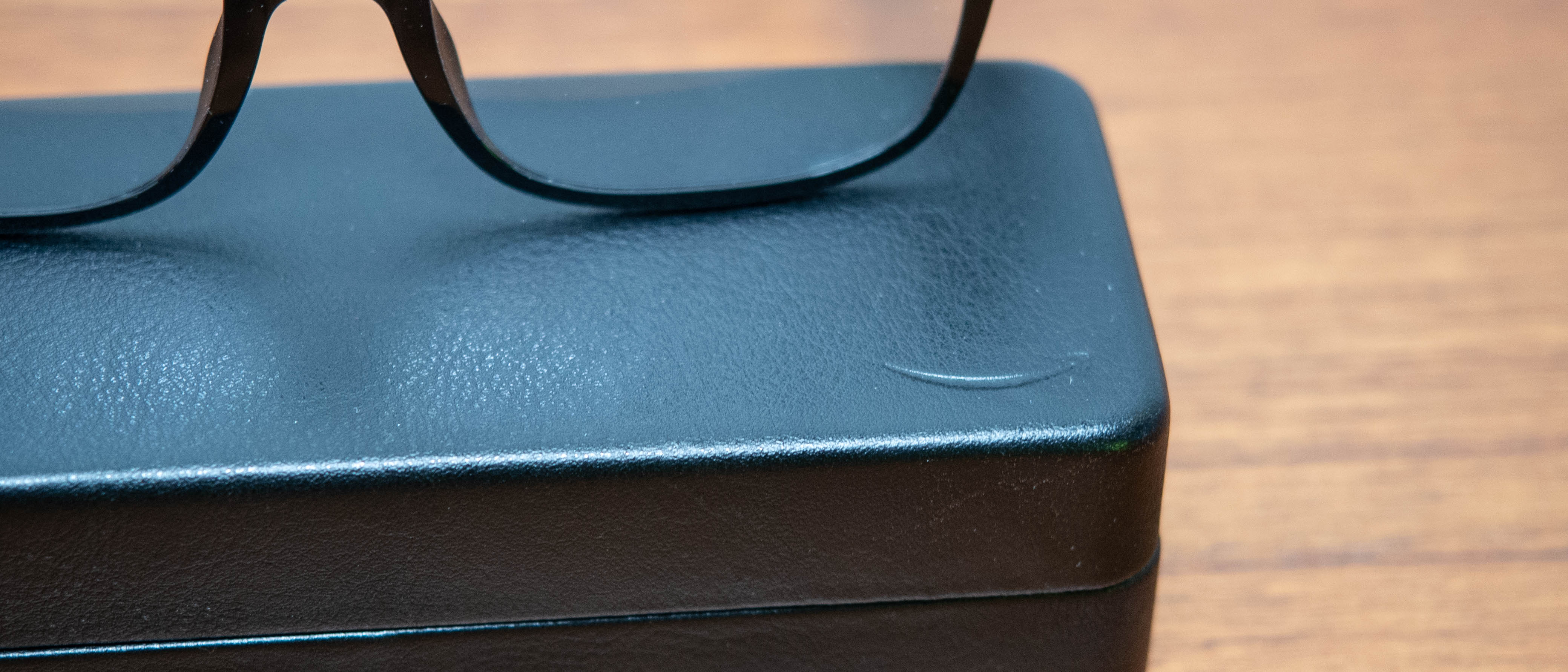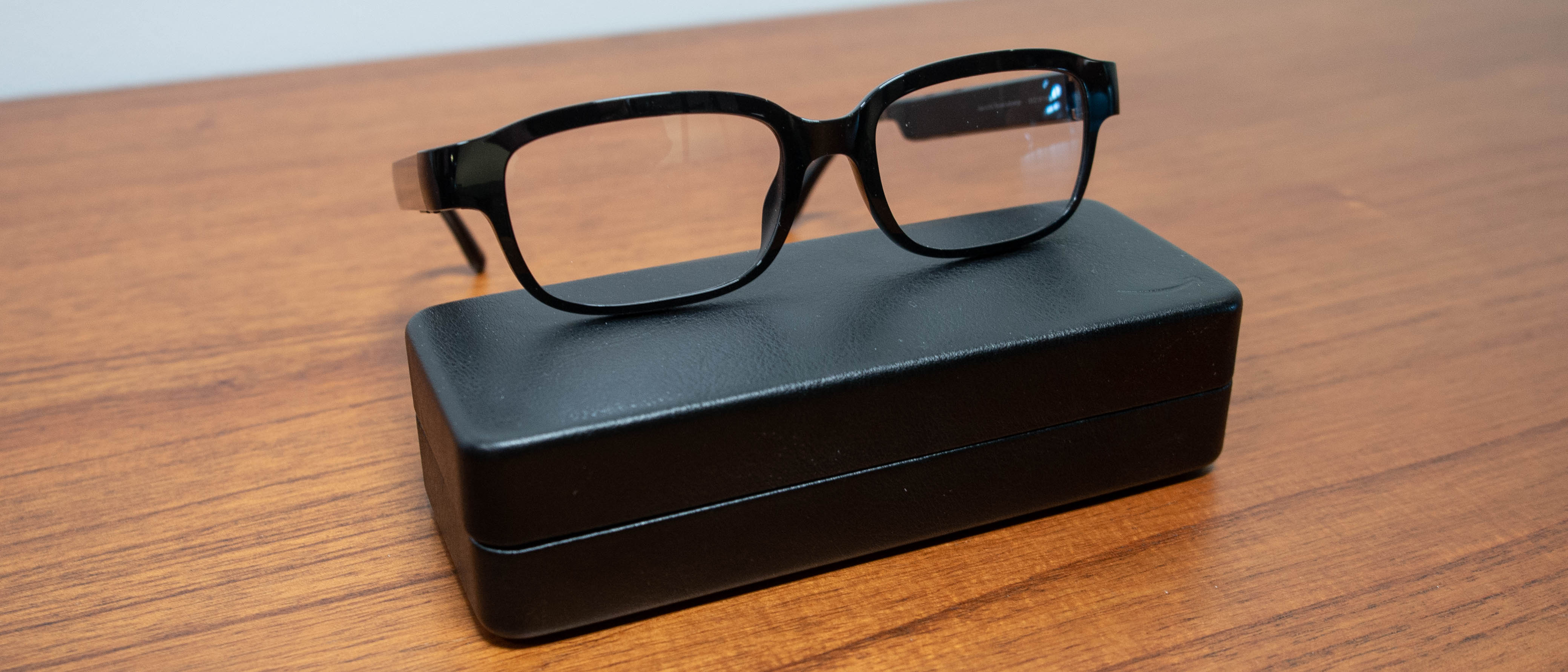Early Verdict
The Echo Frames are an interesting low-cost take on the smart spectacles, which save cost by focusing on audio only. But it's unclear if the desire for Alexa interaction will convince people to pay for yet another smart device - especially if they already have glasses.
Pros
- +
Neat way to bring Alexa on the go
- +
Most stylish smart spectacles yet
Cons
- -
Four times the price of an Echo Dot
- -
Limited release
Why you can trust TechRadar
At Amazon’s September 2019 launch event, the company unveiled a new product - glasses with Alexa built-in, called Echo Frames, for the audio assistant-savvy consumer on the go.
These glasses frames are strongly reminiscent of Google Glass and Snapchat Spectacles, but without any sort of AR overlay or camera. The Frames exist to perch Alexa above your ears for a less intrusive experience than the just-announced Echo Buds.
- More hands-on reviews: Echo Buds | Echo Glow | Echo Dot with Clock | Amazon Smart Oven | Echo Loop Ring | Echo Flex | Echo Studio |
They’re also a lot less dorky than previous smart spectacles, with sensible, glossy black frames. There’s some telltale thickness to the glasses, especially in the temples, that will tip off observers of their special nature - but on the whole, the Echo Frames are much less embarrassing to don in public.
That alone probably cooled smart eyewear development for some time, but the other is consumer demand. Unlike Google or Snapchat’s efforts introducing essentially new products, Amazon is nudging its very wide Alexa userbase and asking if they want to take their voice assistant on the road - to make notes, set reminders or be alerted without needing to pull up their phone.
The Echo Frames are the first of Amazon’s new Day 1 Editions along with the Echo Loop - a sort of early release program for specialty products that are technically ready to use, but not fully refined into their final consumer-facing form. In short, Amazon wants feedback for its more experimental projects.
And the Frames are an experiment to see if it’s the right product to bring Alexa out of the house, which seems to be Amazon’s next big effort.


Amazon Echo Frames price and release date
As Day 1 Edition products, the Echo Frames won’t be widely released - they’ll start with an invitation period for select consumers in the US and cost $179. It’s unclear if they’ll have a wider release or if the invitation period will extend beyond the US, but we would expect to hear from Amazon about any sort of wider rollout after they hear back from their invited early adopters.
Sign up for breaking news, reviews, opinion, top tech deals, and more.

Amazon Echo Frames design
The Echo Frames are undeniably better-looking than Google Glass or Snapchat Spectacles, and won’t expose early adopters as eager Technorati. They only come in one color: black eyewear-grade TR-90, carbon fiber and titanium, with “tortoise temple tips” that can be heated and adjusted by an optician.
They’ll never be quite as nice as proper glasses frames, but they’re passable for most consumers - and everyone looks good in black.
At 31g, they’re not too much heavier than typical glasses - in our short time trying them out, we didn’t feel they’d weigh you down after a long day of wearing them. Luckily, the thick temples don’t get in the way.

Alexa - how it’s like to use
Using Alexa in the Echo Frames is much like everywhere else in Amazon’s voice assistant ecosystem, but you can’t activate it by the typical voice commands - there’s a button on the underside of the right temple that switches listening on.
After that, command as usual, and requests are routed through the app on a linked smartphone. The right temple is touch-sensitive - you swipe along the side (either forward or backward interchangeably) to respond to notifications, or tap to ignore.
There’s a bit of a delay as questions and taps run to the cloud and back, but it’s to be expected - and, since Alexa relies on connection to the cloud, you can’t use the Frames offline.
It wasn’t as hard to get the Frames to hear our commands as it usually is for an Echo speaker, for example - the glasses’ two beamforming microphones picked up our queries just fine, even in a loud room.
The four microspeakers (two per temple) were likewise audible even amid the noise of a crowded demo room, though anyone standing around you can hear them, too - discrete, the Frames are not. Thankfully, there’s a volume rocker below the Alexa activation button to dial it down.
You can theoretically use the Frames any way you would use another Alexa-equipped product - like playing music, for instance - but keep in mind that the audio isn’t that private.
Amazon Echo Frames battery life
Amazon claims the Echo Frames get 14 hours per day of battery life with intermittent use, which Amazon defines as a bundle of 40 Alexa interactions, 45 minutes of music, some podcast and music playback, and 90 incoming notifications.
It’s an odd grab bag of activity, but just goes to show how variable battery life might be for different users with different use patterns - but suffice to say that keeping audio at 60% with normal use should last you through the day. Crank that activity up with constant playback and your battery life will dwindle down to 3 hours.

Echo Frames compatibility
The Echo Frames support Android 8.0 or greater, and sadly, there’s no iOS support just yet.
Thankfully, the Frames aren’t limited to just Alexa, but it’s a little more cumbersome to use an alternative - which, for now, might just be Google Assistant. Long-tap the outward side of the right temple to activate them.
Amazon Echo Frames early verdict
While we’d never have expected a product like the Echo Frames, in hindsight, they’re very much in Amazon’s wheelhouse. Its expertise in parsing voices amid background noise and minimizing components for space and affordability make the Frames as light and cheap as possible.
That said, it’s unclear if consumers are entrenched enough in the Alexa lifestyle to need hands-free access on the go - especially if they already have a pair of prescription glasses or don’t want to wear clear lenses.
Presumably, that’s why Amazon introduced an entirely new category of product - Day 1 Edition - to defray criticism should the Frames or Echo Loop flop. In the meantime, it will be fascinating to see whether Amazon’s version of smart spectacles can succeed where Google and Snapchat failed.
- Echo speakers get cool new displays and better sound
- Echo speakers are getting new privacy controls
- Amazon's upgraded mesh Wi-Fi system is taking on Google Wifi
- Echo Frames and Echo Loop put Alexa on your face and finger
- Here's everything Amazon launched at its Seattle event
- Want, but wait: the new Echo Dot is best saved for Black Friday

David is now a mobile reporter at Cnet. Formerly Mobile Editor, US for TechRadar, he covered phones, tablets, and wearables. He still thinks the iPhone 4 is the best-looking smartphone ever made. He's most interested in technology, gaming and culture – and where they overlap and change our lives. His current beat explores how our on-the-go existence is affected by new gadgets, carrier coverage expansions, and corporate strategy shifts.
What is a hands on review?
Hands on reviews' are a journalist's first impressions of a piece of kit based on spending some time with it. It may be just a few moments, or a few hours. The important thing is we have been able to play with it ourselves and can give you some sense of what it's like to use, even if it's only an embryonic view. For more information, see TechRadar's Reviews Guarantee.
